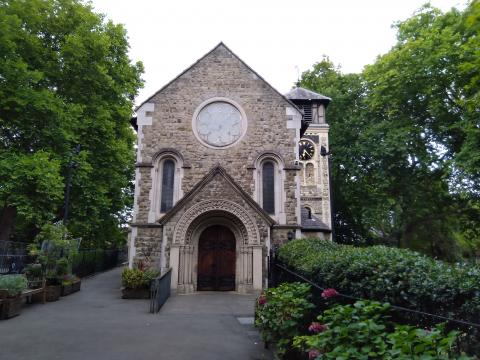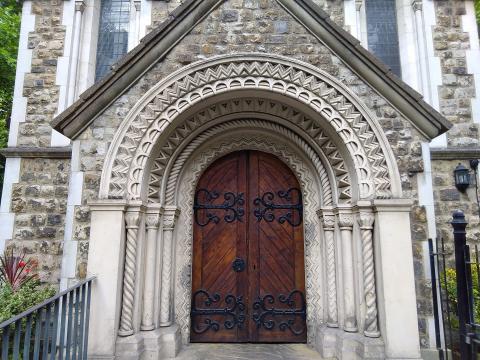Old St Pancras: Changing Times

St Pancras Old Church, despite its name, failed to impress me when I called there last month. The impression was weakened by the temporary fencing that had been erected over the site and surrounding grassland, preventing closer inspection and giving the appearance of a Council tip. The building itself looks nineteenth-century, albeit in a Romanesque, Norman style. And yet there are those who claim it is the site of the oldest church in London, and possibly the whole English south, saving Canterbury. There are local historians claiming the fabric of the earlier tower had evidence of Roman and Saxon building materials, and that the area was occupied by the Romans in the first centuries AD. Locals always want their area to de well regarded by outsiders, but it is a tempting claim. Allowing for some truth in it, those early Roman Christians of the fourth and fifth centuries must have looked out on Britannia and wondered if the faith of Christ would ever truly be accepted. Although the medieval Christianity which followed was often superstitious and idolatrous, this misty isle was sending Christian missionaries over the globe 1200 years later.
As we Christians consider our nation today, with its emptied and depleted churches, weakened and moribund denominations, compromised and anaemic theology, might we also feel as despondent as our predecessors of ancient St Pancras? Polytheistic and Christ-denying religions prosper, atheism proudly preens itself in the public square, houses and cupboards bulge with the acquisitions of material excess. Yet situations change. Times alter. The tide will turn, or Christ’s coming draws nigh. Either way, it is great news.

- Log in to post comments


 Sunday Worship 10.45am & 6.00pm
Sunday Worship 10.45am & 6.00pm